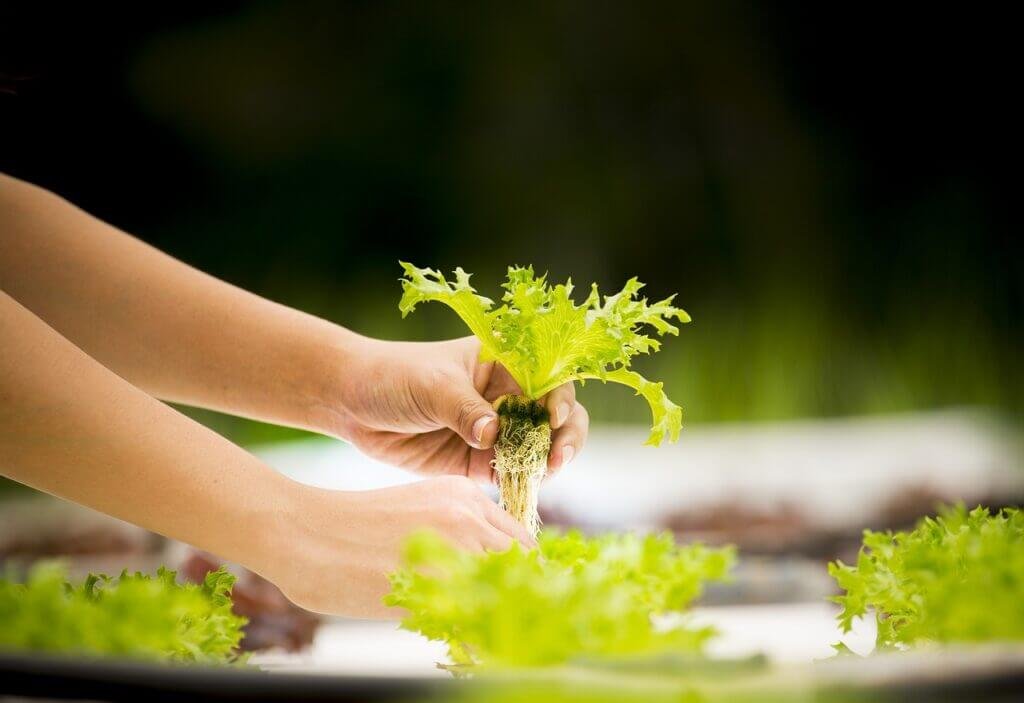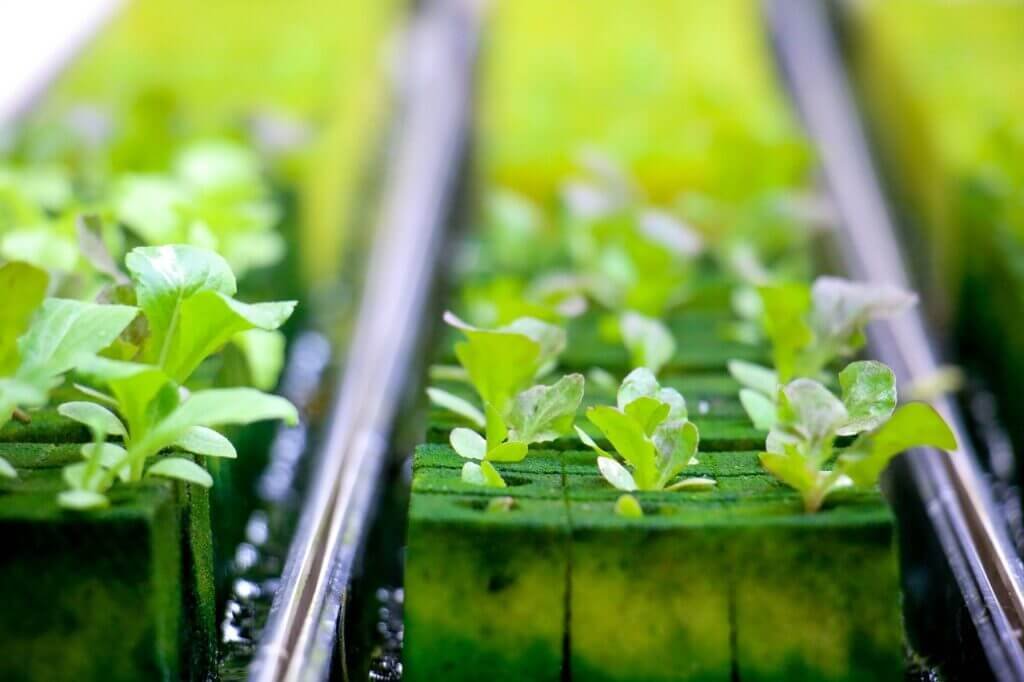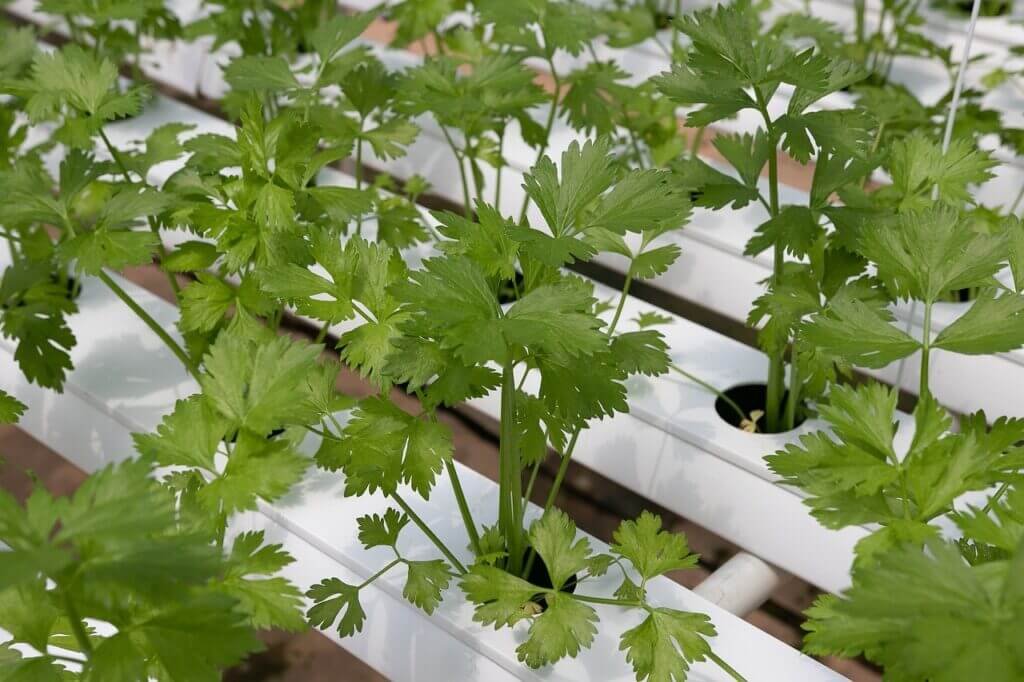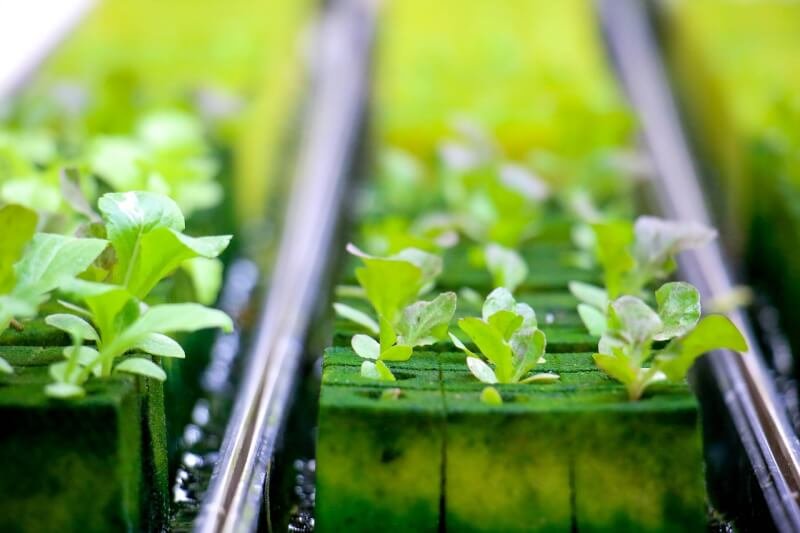Imagine growing your own fresh, healthy produce right in the heart of the concrete jungle. Hydroponic gardening offers a unique solution for urban dwellers craving a connection to nature. By growing plants without soil, hydroponic gardening allows you to cultivate a thriving garden in limited space, even in the city. Whether you have a small balcony or a rooftop terrace, this innovative gardening method offers a convenient and sustainable way to enjoy homegrown fruits and vegetables. So, if you’re dreaming of a lush urban oasis, read on to discover the world of hydroponic gardening and how you can bring it to life in your very own city dwelling.

What Is Hydroponic Gardening?
Hydroponic gardening is a method of growing plants without using soil. Instead, plants are grown in nutrient-rich water solutions, allowing their roots to directly access the essential elements they need for growth. This innovative form of gardening is gaining popularity due to its numerous advantages and the ability to cultivate plants in urban environments where traditional soil-based gardening may not be feasible.
Advantages of Hydroponic Gardening
No soil required
One of the greatest advantages of hydroponic gardening is that it eliminates the need for soil. This means you can grow plants anywhere, regardless of the quality or availability of arable land. Hydroponics removes the constraints of soil-borne diseases and pests, allowing you to have more control over plant health and growth.
Less water usage
Hydroponic systems are designed to be highly efficient in water usage. Unlike traditional soil-based gardening where much of the water is lost through runoff or evaporation, hydroponics recirculates and reuses water, significantly reducing water consumption. This makes it an excellent choice for regions experiencing water scarcity or when conservation is a concern.
Faster growth and higher yields
Plants grown hydroponically tend to grow faster and produce higher yields compared to traditional gardening methods. By providing the plants with the exact nutrients they need, they can focus all their energy on growth and development, resulting in larger and more abundant harvests. This makes hydroponics a great option for those looking to maximize their plant production.
Year-round cultivation
With hydroponic gardening, you can enjoy fresh produce all year round, regardless of the season. By controlling the environment in which the plants grow, including temperature, lighting, and nutrient availability, you can create an ideal growing environment that mimics the plants’ natural conditions. This means you can grow your favorite vegetables and herbs even in the dead of winter.

Types of Hydroponic Systems
Nutrient Film Technique (NFT)
The Nutrient Film Technique (NFT) is one of the simplest hydroponic systems. It involves a thin film of nutrient solution constantly flowing over the plant roots, creating a shallow nutrient-rich stream. The plants are placed on a sloping channel, and gravity allows the solution to continuously flow past the roots, providing them with the necessary sustenance.
Drip System
The drip system is one of the most commonly used hydroponic systems. In this method, a timer-controlled pump delivers nutrient solution to the base of each plant via a network of tubes and drip emitters. The excess solution that is not absorbed by the plants is collected and reused, ensuring minimal waste.
Deep Water Culture (DWC)
Deep Water Culture (DWC) is a hydroponic system where plants are suspended in a nutrient-rich water solution with their roots submerged. Oxygen is supplied to the roots through air stones or diffusers, ensuring proper aeration. This system is especially beneficial for large plants as it provides ample space for root development.
Ebb and Flow System
The Ebb and Flow system, also known as flood and drain, utilizes a tray or container filled with growing medium where the plants are placed. The nutrient solution is periodically pumped into the tray, flooding the roots, and then drained back into a separate reservoir. This cycle ensures that the plants receive sufficient nutrients while avoiding over-saturation.
Aeroponics
Aeroponics is a unique hydroponic system that suspends plants in the air and mists their roots with a nutrient solution. The roots are left bare, allowing them to absorb oxygen directly from the surrounding air. This system is highly efficient and promotes rapid plant growth, making it suitable for cultivating a wide range of plants.
Choosing the Right Hydroponic System
When deciding which hydroponic system to choose, several factors should be considered to ensure the success of your indoor garden.
Considering space availability
Evaluate the available space in your home or garden before selecting a system. Hydroponic systems come in a range of sizes, from small tabletop setups to large-scale commercial systems. Choose a system that fits well within your available space and allows for easy access and maintenance.
Balancing cost and complexity
Different hydroponic systems vary in terms of cost and complexity. While some systems may require a significant upfront investment and technical knowledge, others are more beginner-friendly and budget-friendly. Consider your level of experience, budget, and willingness to invest time and effort into the system before making a decision.
Scalability considerations
If you anticipate wanting to expand your hydroponic garden in the future, consider choosing a system that is easily scalable. Some systems allow for easy expansion by adding additional modules or connecting multiple units together. Planning for scalability from the beginning will save you time and effort as your gardening journey progresses.
Maintenance and monitoring requirements
Each hydroponic system has its own maintenance and monitoring needs. Some systems require regular monitoring of pH and nutrient levels, while others are more self-regulating. Consider the level of maintenance and monitoring you are willing to commit to and choose a system that aligns with your preferences and available time.

Required Tools and Equipment
To set up a successful hydroponic garden, several tools and equipment are essential for providing the plants with the optimal growing conditions they need.
Grow lights
Grow lights are necessary for supplementing or replacing natural sunlight in indoor hydroponic setups. LED grow lights are the most energy-efficient and effective option for providing the right light spectrum needed for various stages of plant growth. Choose lights with adjustable intensity and spectrum to match the specific needs of your plants.
Growing mediums
Since hydroponic systems do not use soil, you will need a growing medium to support the plants’ roots and provide stability. Commonly used growing mediums include rockwool, perlite, coconut coir, and clay pebbles. Each medium has its advantages and considerations, so choose one that suits your plants’ needs and the hydroponic system you are using.
Nutrient solutions
A crucial aspect of hydroponic gardening is providing plants with the correct balance of nutrients required for their growth. Nutrient solutions specifically formulated for hydroponics contain the essential macronutrients and micronutrients needed to support plant development. Choose a nutrient solution that corresponds to the plants you are growing and follow the recommended feeding schedule.
pH and EC meters
Monitoring the pH level and electrical conductivity (EC) of your nutrient solution is essential for ensuring optimal plant growth. pH meters are used to measure the acidity or alkalinity of the solution, while EC meters measure the concentration of dissolved salts in the solution. Regularly monitoring and adjusting these levels will help maintain a stable growing environment for your plants.
Pumps and timers
Hydroponic systems often require pumps to deliver nutrient solution to the plants and timers to automate watering cycles. Submersible water pumps ensure efficient nutrient circulation, while timers can be used to control the duration and frequency of watering. Select pumps and timers suitable for the size of your system and the specific needs of your plants.
Selecting the Ideal Plants for Hydroponics
While hydroponic gardening is versatile and suitable for growing a wide range of plants, there are certain types of plants that thrive particularly well in hydroponic systems.
Leafy greens
Leafy greens, such as lettuce, spinach, and kale, are some of the easiest and most rewarding crops to grow hydroponically. They have short growth cycles, require minimal space, and can be continuously harvested by selectively picking leaves, providing a continuous supply of fresh greens for your salads.
Herbs
Herbs like basil, parsley, mint, and cilantro are well-suited for hydroponic cultivation. They tend to grow rapidly and have compact root systems, making them ideal for smaller hydroponic setups. Growing herbs hydroponically ensures a steady supply of fragrant and flavorful additions to your culinary creations.
Tomatoes and peppers
Tomatoes and peppers are popular crops to grow hydroponically because they produce high yields and are well-suited for controlled environments. Indeterminate varieties that continue to grow and produce fruit throughout the season can be trained to trellises or stake systems for optimal space utilization.
Strawberries
Hydroponics offers an excellent way to grow strawberries as it allows for better control over their growing conditions. The hanging basket system is commonly used for hydroponic strawberry production, providing the plants with good airflow and reducing the risk of pest damage.
Flowering plants
Hydroponics can also be used to grow a variety of flowering plants, including ornamental flowers and flowering herbs such as lavender and chamomile. The precise control over the growing environment and nutrient availability can result in vibrant blooms and prolonged flowering periods.
Setting Up a Hydroponic Garden in the City
Hydroponic gardening in urban environments offers a unique opportunity to grow fresh produce in limited spaces. Setting up a successful hydroponic garden in the city requires careful planning and consideration of various factors.
Choosing the right location
When selecting a location for your urban hydroponic garden, choose an area that receives adequate sunlight or plan to supplement with artificial lighting. Consider available space on balconies, rooftops, or even indoor areas with sufficient light exposure. Ensure that the location is easily accessible for maintenance and provides a stable and secure environment for the plants.
Determining space limitations
Urban environments often come with space limitations. Measure the available area and consider the type of hydroponic system that can fit within those dimensions. Vertical systems or compact setups may be ideal for maximizing space utilization in small areas.
Understanding lighting needs
In urban settings, access to natural sunlight for gardening purposes may be limited. Understanding the lighting needs of your plants is crucial for successful growth. Supplemental grow lights can ensure that your plants receive the appropriate light spectrum and intensity necessary for healthy development, even within indoor or shaded spaces.
Acquiring necessary permits
Before setting up a hydroponic garden in the city, check if there are any permits or regulations that need to be followed. Some cities have specific guidelines for urban agriculture initiatives, including hydroponic gardening. Contact local authorities or urban gardening organizations to ensure compliance and obtain any necessary permits.
Maintaining a Hydroponic Garden
Proper maintenance is essential for the long-term success of your hydroponic garden. Regular monitoring and care will ensure healthy plant growth and optimize yields.
Monitoring nutrient levels and pH
Regularly monitor and adjust the nutrient levels in the hydroponic solution to maintain optimal plant nutrition. pH levels should be within the recommended range specific to your plants, typically around 5.5 to 6.5 for most crops. Test the solution regularly using a pH meter and adjust accordingly using pH up or down solutions.
Managing water and airflow
Maintain proper water levels and ensure a good balance between air and water for your plants’ roots. Avoid overfilling or completely drying out your hydroponic system. Adequate airflow around the plants’ foliage helps prevent the growth of mold and aids in transpiration. Use fans or provide natural ventilation to maintain airflow within the growing area.
Pruning and trimming plants
Regular pruning and trimming are essential to maintain plant health and control growth. Remove any dead or damaged leaves, as well as any branches that are blocking airflow or overcrowding neighboring plants. Pruning encourages bushier growth and helps redirect the plant’s energy towards fruit or flower production.
Preventing and managing pests
Although hydroponic gardening reduces the risk of soil-borne pests, it is not entirely immune to infestations. Regularly inspect your plants for signs of pests and diseases such as aphids, whiteflies, or powdery mildew. Introduce integrated pest management strategies, such as using natural predators or organic insecticides, to address any pest issues and maintain a healthy growing environment.
Harvesting and Enjoying Your Hydroponic Produce
Harvesting your hydroponically grown produce is an exciting and rewarding experience. To ensure the best flavor and nutritional value, proper harvesting techniques and post-harvest handling are essential.
Optimal harvesting techniques
Each crop has its ideal harvesting technique, and it is important to familiarize yourself with these guidelines. Generally, leafy greens can be harvested by selectively picking outer leaves, allowing the central rosette to continue growing. Fruiting crops like tomatoes and peppers should be harvested when fully ripe, while herbs can be harvested by cutting the upper portions of the plant, leaving the lower leaves to continue growing.
Storing and preserving hydroponic produce
Hydroponically grown produce tends to have a longer shelf life compared to its soil-grown counterparts. It is important to store harvested produce properly to maintain its freshness. Leafy greens can be stored in airtight containers lined with paper towels to absorb excess moisture, while fruits and vegetables are best stored in the refrigerator.
Exploring new recipes
One of the joys of hydroponic gardening is experimenting with fresh, flavorful produce in the kitchen. Take advantage of your homegrown herbs, vegetables, and fruits by exploring new recipes and incorporating them into your favorite dishes. From vibrant salads to homemade sauces and delightful desserts, the possibilities are endless when you have a bountiful supply of homegrown hydroponic produce.
Community and Urban Hydroponic Gardening
Engaging in community and urban hydroponic gardening initiatives can have numerous benefits, both for individuals and the community as a whole.
Benefits of community gardens
Community gardens foster a sense of belonging, connection, and shared purpose within neighborhoods. They provide opportunities for individuals from diverse backgrounds to come together, learn from one another, and develop stronger social ties. Community gardens also contribute to food security by providing fresh produce to those who may not have access to it otherwise.
Sharing resources and knowledge
Community and urban hydroponic gardening initiatives allow for the sharing of resources, knowledge, and experiences. Gardeners can exchange seeds, equipment, and expertise, creating a supportive network of like-minded individuals. This collaborative approach can accelerate learning, inspire innovation, and strengthen the overall gardening community.
Urban gardening initiatives
Urban gardening, including hydroponics, plays a critical role in greening cities and improving the quality of urban life. By converting underutilized spaces into productive gardens, cities can reduce food miles, beautify neighborhoods, and enhance environmental sustainability. Urban gardening initiatives also provide opportunities for education, awareness, and engagement in sustainable food production practices.
In conclusion, hydroponic gardening offers an exciting and efficient way to grow plants without soil, making it ideal for urban environments and those seeking year-round cultivation. The advantages of hydroponics, such as reduced water usage, faster growth, and higher yields, make it an attractive option for both beginners and experienced gardeners. With the right hydroponic system, tools, and plant selection, anyone can set up a successful hydroponic garden and enjoy the harvest of fresh, flavorful produce. Whether you choose to embark on this journey individually or as part of a community initiative, hydroponic gardening opens up a world of possibilities for urban dwellers, bringing the joy of gardening right to your doorstep.


